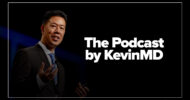
A medical student asked to speak to me about a month ago at the Philadelphia College of Osteopathic Medicine, where I am an instructor of family medicine. He has been very active in our school’s Primary Care Scholars program and community health outreach activities. “Dr. Chan,” he said, “I am so torn. I really love primary care, but I am so worried that I won’t be able to get my loans paid off when I’m done.”
Unfortunately, he was not the first student to approach me with this dilemma, nor will he be the last. I am impressed that students are planning ahead for their future, but the truth is that if you spend all this time training for a profession that demands so much of your time and effort, you have to pick a specialty that speaks to your passion. Students only hear about private solo or group practice, employment in a hospital system or academic medicine. They never get exposed to all the other ultra-fun options that can launch them into a different career path.
As I talked to this particular medical student, I thought back to my first year in medical school, when I accidentally found out about the National Health Service Corps (NHSC) Scholarship. I landed that scholarship and my career took off on the road less traveled. I chose to go to the Navajo Reservation near Shiprock, New Mexico, a half hour from the nearest town, Farmington, and three and a half hours from Albuquerque. I did full spectrum family medicine, worked in a school-based health center, and explored the Southwest in my spare time. I was doing “international” medicine right in the middle of United States! The majority of the elderly patients spoke only Navajo, requiring us to work with interpreters, usually staff who worked at the hospital. Many of our patients drove up to three hours on dirt roads to get to us for care. Some of them still live in hogans — a traditional dwelling made of wood and packed mud — without running water and electricity. Others lived right in Shiprock or worked in Farmington or Albuquerque.
My scholarship paid for medical school, and I got a small stipend during my studies. Once I moved to New Mexico, I received a salary and a state tax credit — meaning part of my salary would not be taxed — for practicing in an underserved area. When I finished paying back the three years of scholarship that I received with three years of working in an underserved community, I could have applied for loan repayment through the state or through NHSC. Both programs pay off a certain portion of your loan for two or three years of work in an underserved area. Many students have the misconception that NHSC places you in the middle of nowhere, but scholars decide where they want to go. Many choose to work in urban areas such as Washington, DC or New Haven, Connecticut. There are many options. The one common thread that connects us is that we are all adventurous people who want to fill a gap in medical care and make a difference in our careers.
Students also don’t understand that choosing primary care does not preclude specializing later. One of my colleagues in family medicine later did a fellowship in OB/GYN so she could do Caesarean sections as a family doctor, and now, she works in Africa and Thailand. Another internal medicine colleague who oversaw our tuberculosis program at Shiprock is now in the middle of her infectious disease fellowship. NHSC sites also love to utilize the strengths and interests of their providers to offer additional services for their population.
My colleagues and I worked together to start an alternative medicine clinic in conjunction with a pain management program at Shiprock. As an osteopathic family physician, I offered osteopathic manipulative treatments (OMT), a type of manual therapy, and my MD colleague did acupuncture. We got rave reviews from our patients and filled a much-needed gap in their health care.
While I was working in Shiprock, I met many clinicians who signed up for the Public Health Service Commissioned Corps, another interesting alternative career. They have the option of working in many federal agencies, including the FDA, NASA, and the Surgeon General’s office. They can continue to work as practicing physicians, or they can choose to enter public policy and population health. Just like in the military, you earn a rank and slowly move up through the years. Benefits are amazing even after you retire.
There is such a current demand for primary care physicians, and the options for careers in primary care are endless. All that is required is a little research. I’m glad to report that I am currently debt free and enjoying my work, teaching family medicine and osteopathic manipulation in a clinic at my alma mater, the Philadelphia College of Osteopathic Medicine, serving as faculty advisor to student clubs and medical students, establishing connections with the surrounding community, all without financial worries. I think my experience gave the medical student more options to consider and allayed some of his fears of being chained to a financial sinkhole. I hope this helps you as well.
Charmaine Chan is a family physician who blogs at Primary Care Progress.
Image credit: Shutterstock.com






















